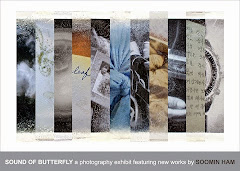At MEG, we believe opportunity dances with those already on
the dance floor. Opportunities we don’t know about are opportunities we can’t
pursue.
 For that reason, we are excited to host Success as an
Artist, a six-hour seminar led by Catriona Fraser, owner and director of The
Fraser Gallery and an expert on what it takes to develop a successful fine arts
career. With over 16 years experience as one of the most successful art dealers
in the Washington, D.C. area, and an excellent reputation for supporting local
emerging artists, Fraser’s presentation reflects her deep experience and
connections in the art marketplace.
For that reason, we are excited to host Success as an
Artist, a six-hour seminar led by Catriona Fraser, owner and director of The
Fraser Gallery and an expert on what it takes to develop a successful fine arts
career. With over 16 years experience as one of the most successful art dealers
in the Washington, D.C. area, and an excellent reputation for supporting local
emerging artists, Fraser’s presentation reflects her deep experience and
connections in the art marketplace.
The information and resources provided in the seminar are
useful to artists working in all media, including painting, sculpture and photography.
Whether you’re an emerging artist or just want to boost your art career with
fresh ideas, you’ll leave the seminar with practical information and advice on
what it takes to thrive in today’s challenging arts environment. Each artist receives a resource packet
including a CD of essential documents and other reference materials.
The seminar will take place at Multiple Exposures Gallery at
the Torpedo Factory Arts Center in Alexandria, VA over two evenings:
· Thursday,
March 22nd: 6pm-9pm
· Thursday,
March 29th: 6pm-9pm
Topics to be covered include:
March 22
- Professional presentation of your work
- How to cut your framing and presentation costs
- Framing resources
- How to take good images of your artwork
- How to price your artwork
- How to write a resume
- How to build your artistic credentials
- Juried competitions and other opportunities
- Publicity and marketing
- PR contacts and art critics
- How to write a press release
March 29
- Regional arts organizations
- Galleries
- Gallery/Artist relationships and contracts
- Outdoor arts festivals, display panels, tents, selling your work, credit cards
- Alternative funding, grants and residencies
- Museum acquisitions of your work
The fee to attend the two-night seminar is $85.00. To
register, please contact Fraser at 301-254-0586 or info@thefrasergallery.com.
Several MEG members have already reaped the benefits of
attending past Fraser seminars and you’re likely to see at least a few of us in
the seats this time too. Hope you’ll join us!
More information on Fraser and the seminar, including
feedback from previous attendees, is available here.
















